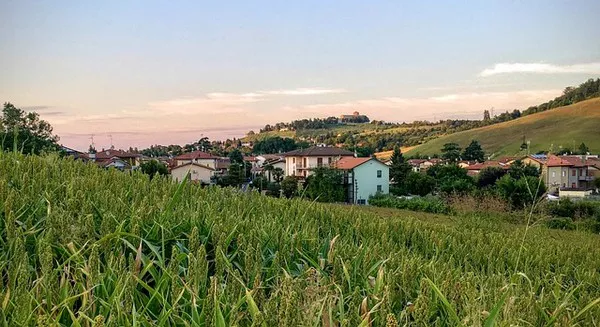Plants are master alchemists, capable of transforming sunlight, air, and water into the very foundation of life itself: energy. Through the process of photosynthesis, these remarkable organisms have evolved an ingenious mechanism to obtain energy from the environment, sustaining not only their own growth but also serving as the primary energy source for all life on Earth. In this article, we will delve into the fascinating world of photosynthesis, exploring the intricate steps by which plants harness energy and convert it into chemical energy to fuel their biological processes.
The Mechanism of Photosynthesis
Photosynthesis, derived from the Greek words “photo” (light) and “synthesis” (putting together), is a complex biochemical process that occurs within the chloroplasts of plant cells. The process primarily relies on sunlight, carbon dioxide (CO2), and water (H2O) to manufacture glucose (C6H12O6) and oxygen (O2) in a series of interconnected reactions. These reactions can be broadly divided into two stages: the light-dependent reactions and the light-independent reactions (also known as the Calvin cycle).
Light-Dependent Reactions
The initial phase of photosynthesis revolves around capturing and converting solar energy into chemical energy. The process commences in the thylakoid membranes of the chloroplasts, where specialized pigments, including chlorophyll, absorb light energy. This energy excites electrons within the chlorophyll molecules, initiating a chain reaction that produces adenosine triphosphate (ATP) and nicotinamide adenine dinucleotide phosphate (NADPH).
ATP serves as the energy currency of the cell, while NADPH is a crucial reducing agent required for the light-independent reactions. The released oxygen gas is considered a byproduct of this stage and is released into the atmosphere, replenishing the air we breathe.
Light-Independent Reactions (Calvin Cycle)
The second phase of photosynthesis takes place in the stroma of the chloroplasts. Unlike the light-dependent reactions, the Calvin cycle does not directly rely on solar energy but depends on the energy-rich molecules, ATP, and NADPH, generated during the preceding phase.
During the Calvin cycle, CO2 from the atmosphere is fixed and incorporated into a five-carbon compound called ribulose-1,5-bisphosphate (RuBP). Enzymes catalyze the reactions to yield two molecules of a three-carbon compound called 3-phosphoglycerate (PGA). This compound is then reduced and converted into glucose, which becomes the primary energy-storage molecule in plants. The cycle continually regenerates RuBP to sustain the process.
Adaptations for Energy Optimization
Plants have evolved a wide array of adaptations to maximize their energy capture and usage efficiency. These adaptations are evident in various aspects of their anatomy, physiology, and growth patterns.
Leaf Structure
Leaves, the primary site of photosynthesis, exhibit adaptations that optimize light absorption and gas exchange. The broad, flat shape of leaves maximizes the surface area exposed to sunlight, while the presence of stomata allows for the exchange of gases, facilitating the uptake of CO2 and the release of O2. The internal structure of leaves, with the presence of mesophyll cells containing chloroplasts, further enhances light absorption and energy capture.
Photosynthetic Pigments
Chlorophyll, the dominant photosynthetic pigment, comes in various forms, each optimized to capture specific wavelengths of light. Chlorophyll a, the most abundant form, absorbs light most efficiently in the blue and red regions of the electromagnetic spectrum. Chlorophyll b and other accessory pigments broaden the absorption range, ensuring plants can harvest light energy from across the visible spectrum.
C4 and CAM Photosynthesis
Certain plant species have evolved alternative photosynthetic pathways, such as C4 and CAM photosynthesis, which are more efficient in specific environmental conditions. C4 plants, like corn and sugarcane, spatially separate the initial carbon fixation step from the Calvin cycle, allowing them to thrive in high-temperature and arid environments. CAM plants, such as cacti and pineapple, open their stomata at night to minimize water loss and carry out the initial carbon fixation, storing it as malic acid before converting it during the day.
Photoprotection Mechanisms
While photosynthesis is crucial for plant survival, excessive light exposure can lead to oxidative stress and damage to the photosynthetic apparatus. To mitigate such risks, plants have developed photoprotection mechanisms, including thermal dissipation of excess energy as heat and non-photochemical quenching of excited chlorophyll molecules.
Conclusion
In conclusion, the process of photosynthesis showcases the extraordinary ability of plants to harness energy from the environment and synthesize essential compounds necessary for life. Through the interaction of sunlight, carbon dioxide, and water, plants perform the miraculous transformation of light energy into chemical energy, sustaining not only themselves but also forming the foundation of the food chain. The intricate adaptations and mechanisms plants have evolved to optimize energy capture and utilization underscore the vital role they play in maintaining the delicate balance of life on Earth. As we continue to explore and understand the mysteries of photosynthesis, we gain invaluable insights into our natural world and its interconnected web of life.

